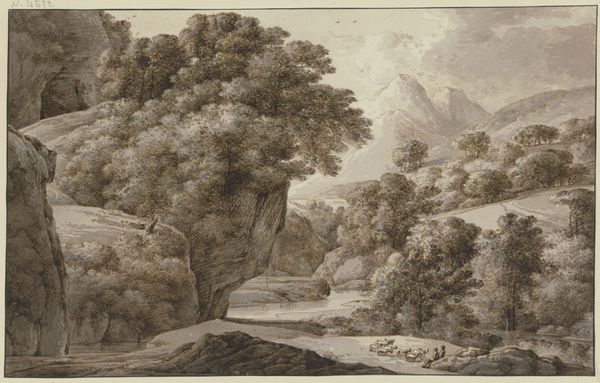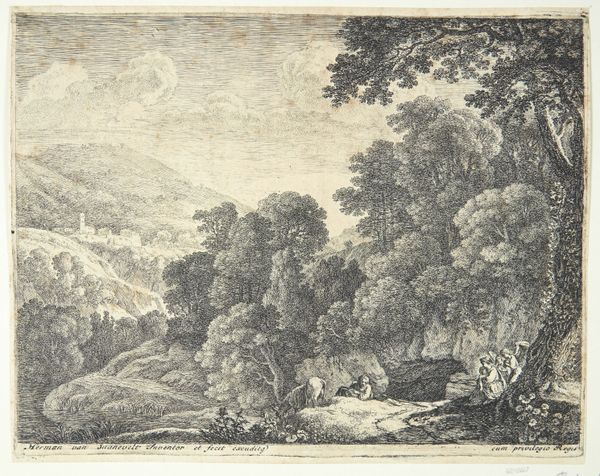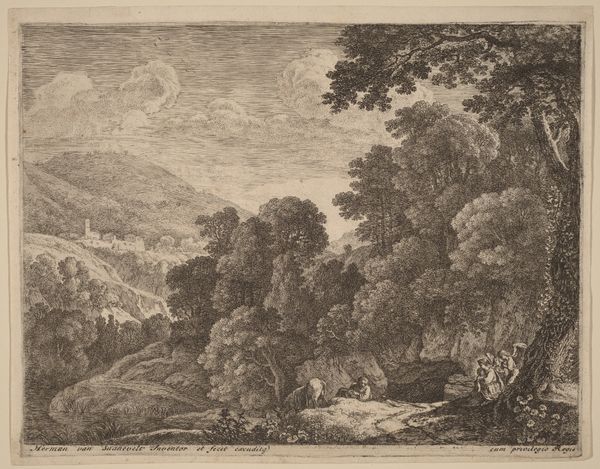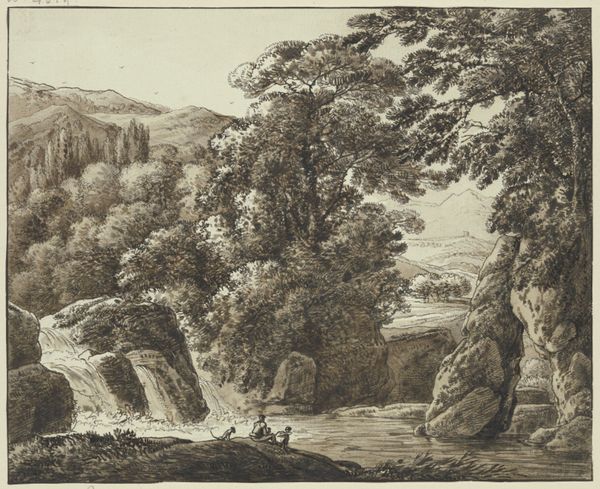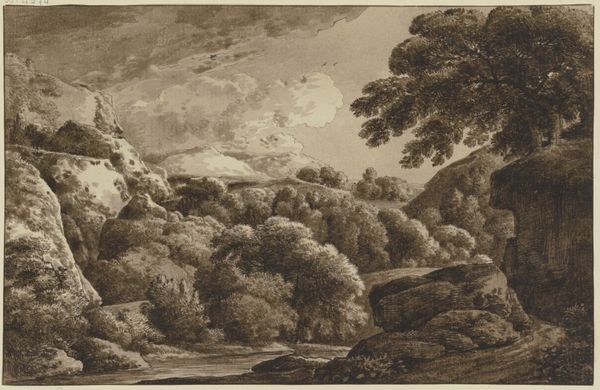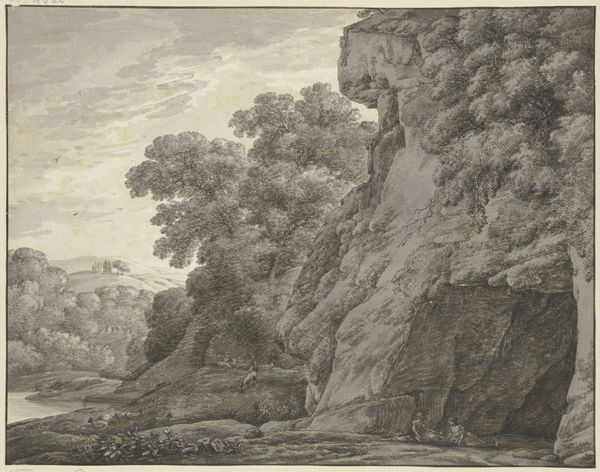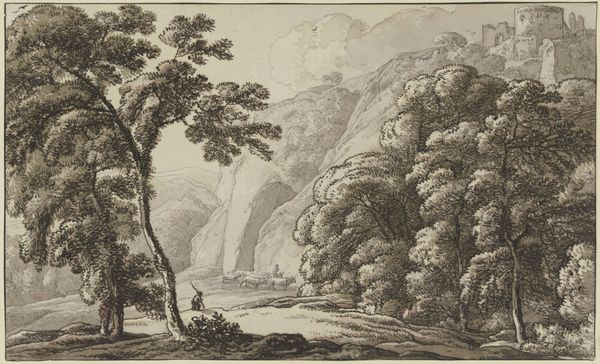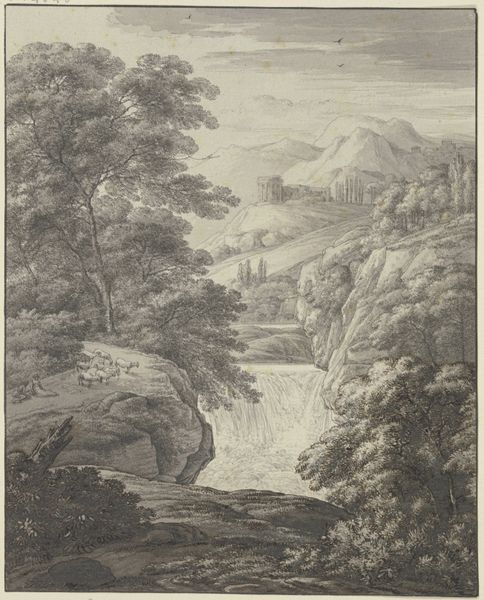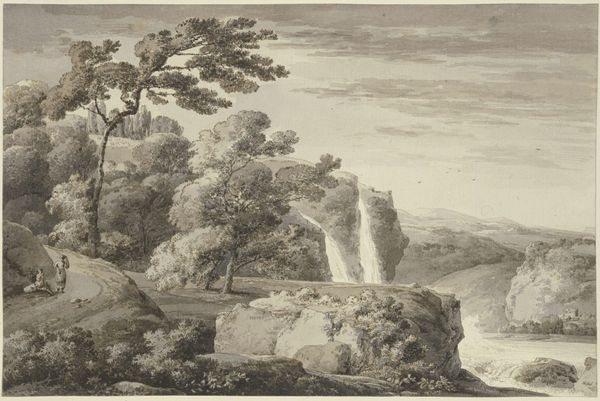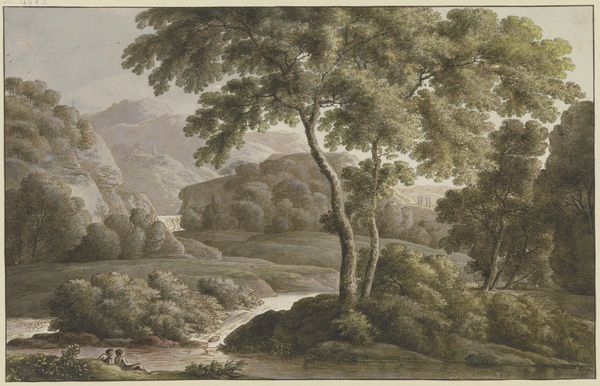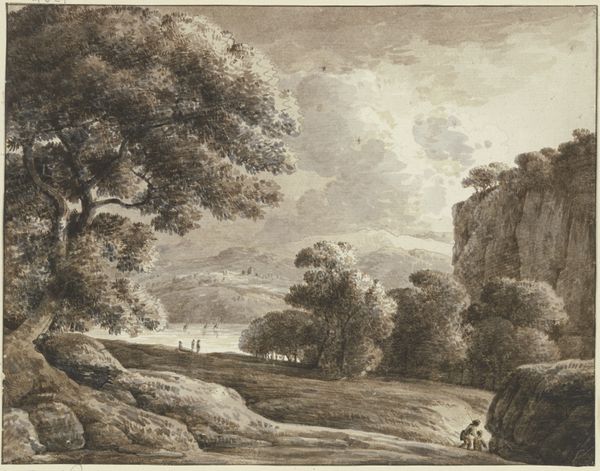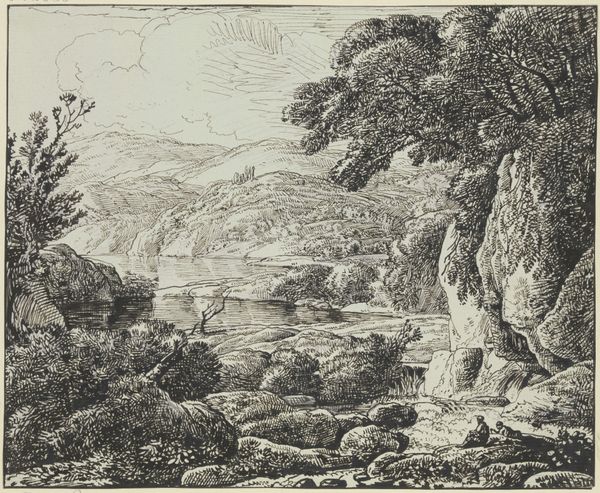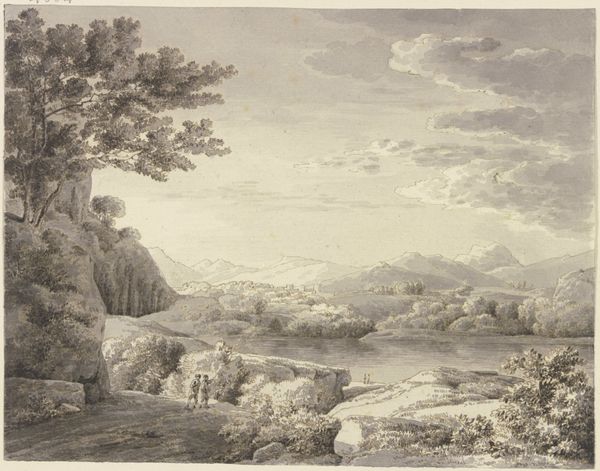
drawing, ink, pencil
#
drawing
#
pencil sketch
#
landscape
#
charcoal drawing
#
ink
#
pencil drawing
#
romanticism
#
pencil
#
watercolor
Copyright: Public Domain
Curator: Let’s discuss Franz Kobell’s “Waldige Landschaft mit Wasserfall”, currently held at the Städel Museum. Though undated, the work captures a forested landscape with a waterfall. What are your initial impressions? Editor: Immediately, I feel a sense of tranquil isolation. The monochrome palette lends a timeless quality. It is interesting how the two small human figures seated off to the side add a striking note of silent observation. Curator: Indeed. Kobell was part of a burgeoning interest in landscape art that emerged alongside growing urbanization. Artists began idealizing nature, reflecting anxieties about industrial development and its impact on traditional ways of life. The unblemished landscape was a symbolic haven. Editor: Precisely. It almost romanticizes the purity of nature, but there is also a clear class element at play here: to have the privilege of observing and enjoying this untainted space as an upper class ideal separate from everyday social problems. Curator: A valid point. Moreover, Kobell’s technical skill is notable; the textures he creates using ink, pencil and perhaps some watercolor washes suggest the density of the forest. There is an element of performance, creating these artworks specifically for collecting within the artistic institutions of the time. Editor: I find it interesting that the people almost disappear into the landscape and lose all form; it raises interesting questions about belonging. Curator: The positioning might indeed invite viewers to ponder their place in the world, especially amidst increasing environmental concerns in our own era. Does art have an inherent activist responsibility or does its primary function exist simply as documentation of what it represents, the representation being enough to stimulate change through its display? Editor: I lean toward art serving as an interventionist tool. I’m not sure if simply documentation always suffices in stirring sufficient engagement, if divorced from a strong intentional directive. Curator: These are fascinating avenues for consideration. Thank you for sharing your insights; they highlight how this relatively simple image continues to provoke critical thought. Editor: Thanks! Analyzing art through socially conscious frameworks, in particular with respect to historical anxieties about land and resources, is an enriching activity, one I feel fortunate to do.
Comments
No comments
Be the first to comment and join the conversation on the ultimate creative platform.
